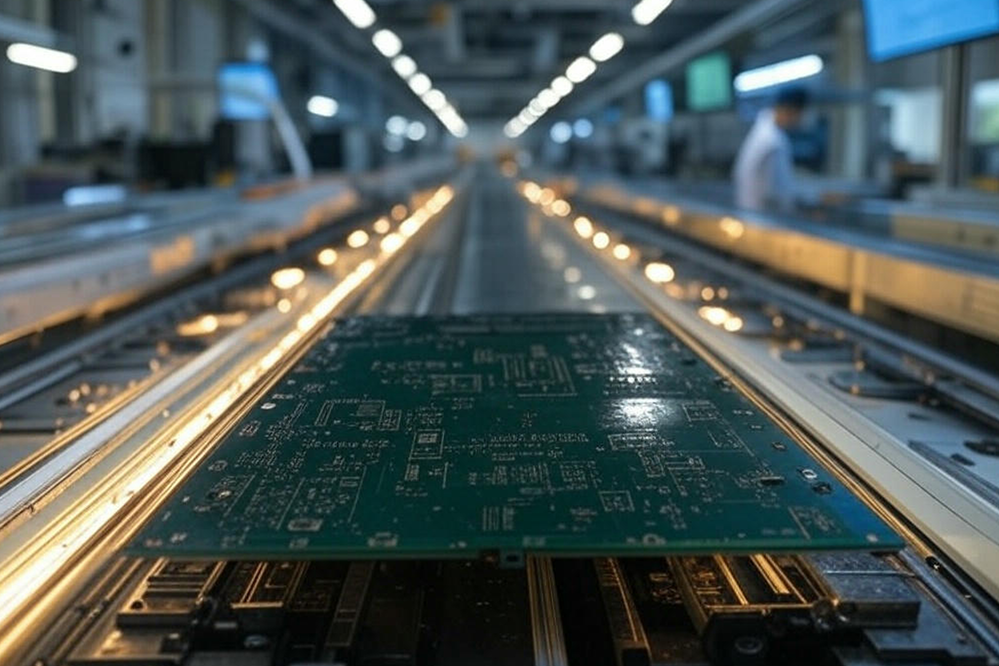Estimating the cost of a printed circuit board (PCB) project is a critical step for engineers aiming to balance performance, quality, and budget constraints. A PCB cost calculator simplifies this process by offering instant cost estimates based on your design specifications, enabling informed decisions early in development. In our previous blog, "PCB Cost Per Unit" we explored the factors that determine the cost of individual PCBs, such as size, layers, and quantity. This guide builds on that foundation, showing you how to use a cost calculator to estimate your entire project budget—covering not just fabrication but also assembly, components, testing, and shipping. Whether you're prototyping or scaling to production, here's how to plan your finances effectively and keep costs under control.
What Is a PCB Cost Calculator?
A PCB cost calculator is an online tool that provides real-time cost estimates for PCB fabrication based on design parameters you input. It's a game-changer for engineers needing quick insights into how choices like board size or layer count affect their budget. For instance, ALLPCB's online PCB cost calculator lets you enter details like dimensions, layers, and quantity to get an immediate quote, helping you see the financial impact of your design in seconds.
Typical parameters in a PCB cost calculator include:
-
Board Dimensions: Length and width (e.g., 100mm x 100mm).
-
Number of Layers: Single, double, or multilayer (e.g., 2, 4, 6).
-
Material Type: Standard FR-4 or specialized options like Rogers.
-
Copper Weight: Often 1 oz/ft² or higher.
-
Surface Finish: Options like HASL or ENIG.
-
Trace Width/Spacing: Minimum values affect manufacturing complexity.
-
Drill Holes: Number and type (e.g., through-hole vs. vias).
-
Quantity: Number of units ordered.
Each choice influences the cost. For example, a 2-layer board might cost $5 per unit for a small batch, but switching to 4 layers could increase it to $15 due to added materials and processing.
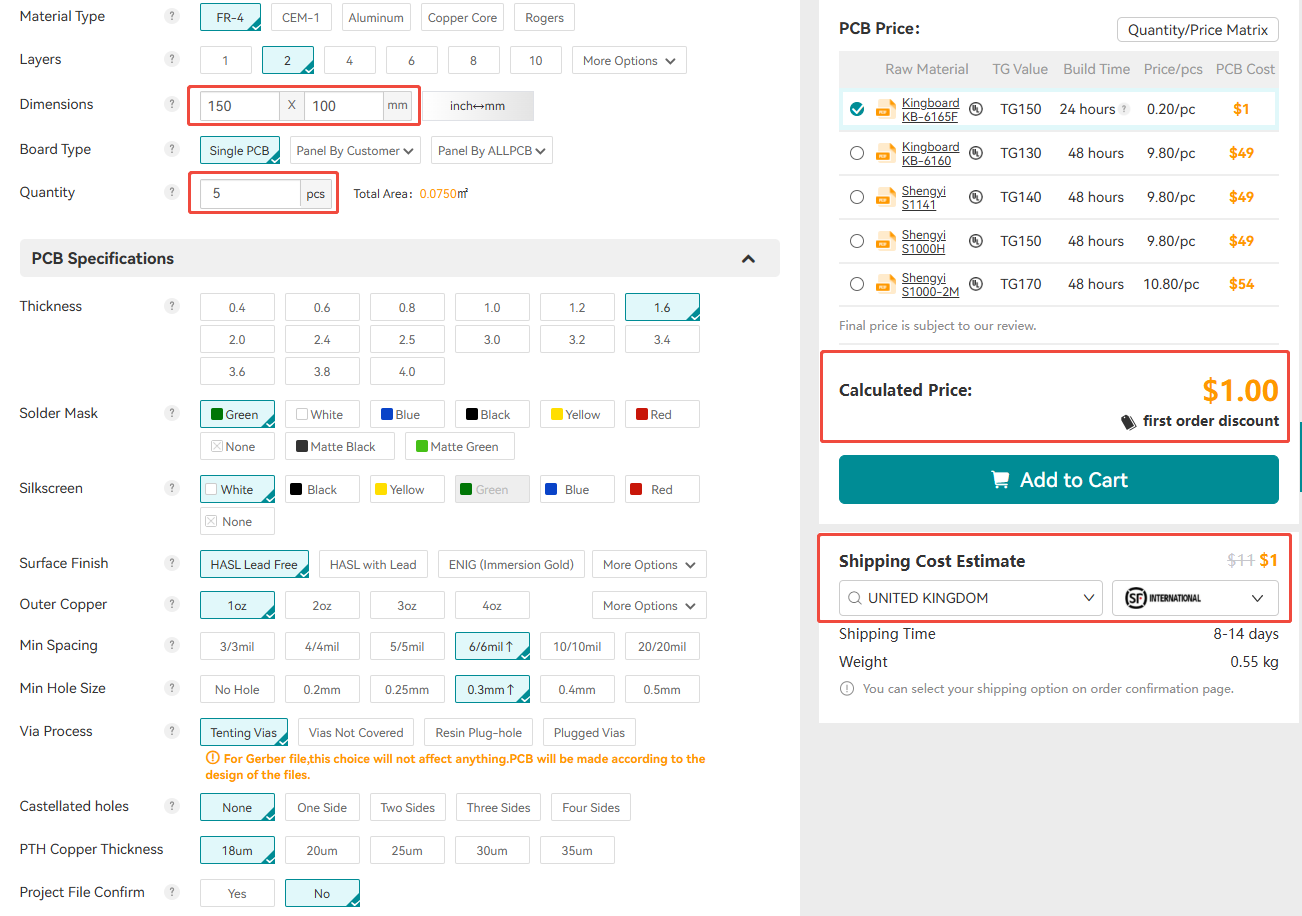
Connecting PCB Cost Per Unit to Total Project Budget
Our previous blog on PCB cost per unit detailed how factors like board size, complexity, and economies of scale drive the price of each PCB. That's a vital starting point, but a complete project budget goes beyond fabrication. A PCB cost calculator builds on this by estimating fabrication costs, which you can then combine with other expenses—like assembly and testing—to get the full picture. This blog complements the earlier discussion by showing how to scale from per-unit costs to a comprehensive project estimate, ensuring no cost catches you off guard.
Breaking Down Total Project Costs
To estimate your project budget accurately, consider these key components:
1. Fabrication Costs
Fabrication is the core expense, influenced by the factors outlined in our cost-per-unit blog—size, layers, materials, and quantity. A cost calculator quantifies this for you. For a 100mm x 100mm 4-layer board in a batch of 100, you might see a quote of $500, or $5 per unit.
2. Assembly Costs
If you're outsourcing assembly, costs depend on component count and complexity. A rough guide is $0.05-$0.10 per surface-mount component, plus a setup fee. For a board with 50 components, that's $2.50-$5.00 per board, or $250-$500 for 100 units, plus a $50-$100 setup fee.
3. Component Costs
The price of parts like resistors, capacitors, and ICs varies widely. Use a Bill of Materials (BOM) tool or supplier quotes to estimate this—say, $10 per board, or $1,000 for 100 units.
4. Testing Costs
Quality assurance, such as functional or in-circuit testing, might cost $1-$5 per board. For 100 boards, that's $100-$500, depending on the rigor required.
5. Shipping Costs
Transporting your boards adds another layer of expense. Shipping 100 units might cost $30-$50 standard, or more for expedited delivery.
By combining these, you get a holistic budget. A cost calculator handles fabrication, but you'll need to estimate the rest separately or use additional tools provided by manufacturers.
How to Use a PCB Cost Calculator
Here's a step-by-step approach to maximize a PCB cost calculator's value:
-
Enter Core Specs: Input board size, layers, and quantity (e.g., 100mm x 100mm, 4 layers, 100 units).
-
Choose Materials: Select PCB material FR4 and HASL for affordability, or upgrade if needed.
-
Add Special Features: Include options like blind vias if applicable.
-
Get the Quote: Review the fabrication cost (e.g., $500).
-
Tweak and Optimize: Adjust parameters—like reducing layers to 2—to lower the cost.
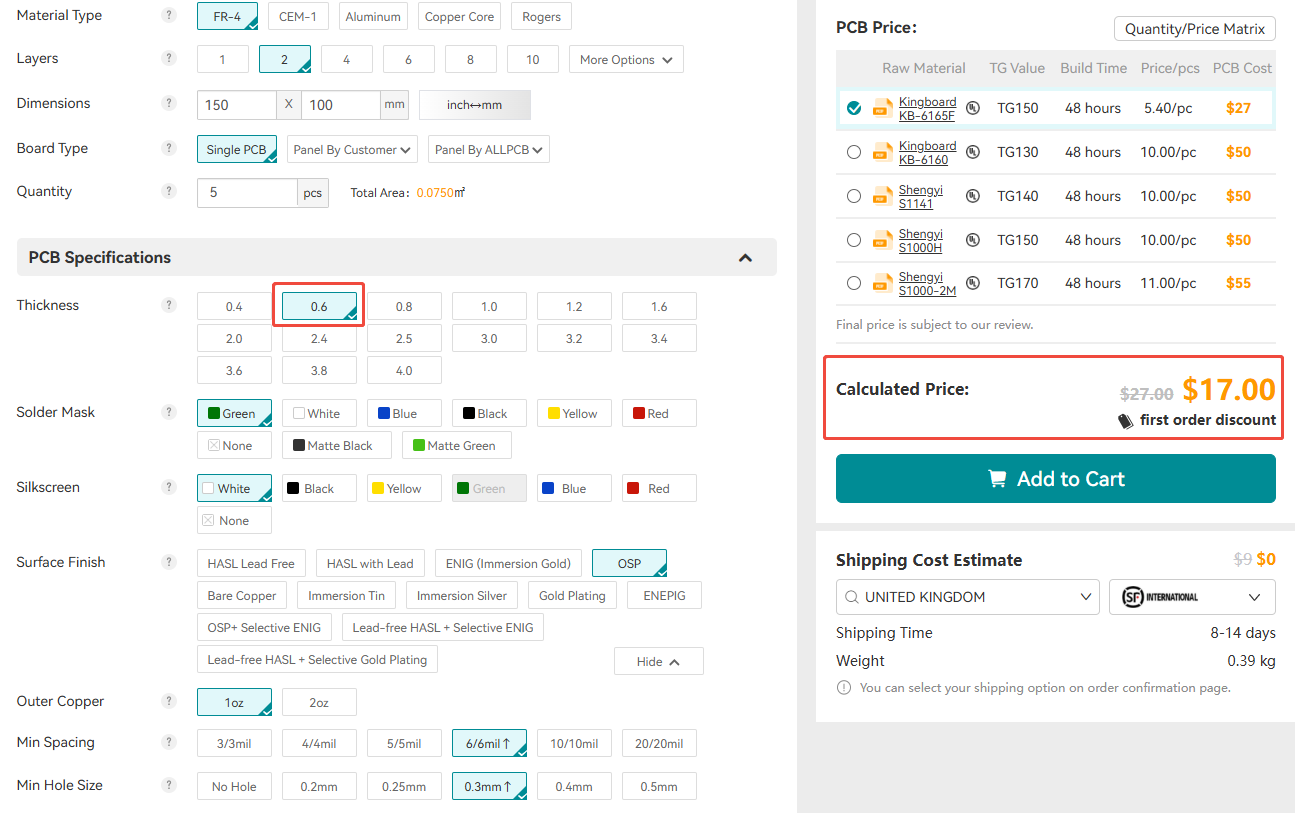
This process helps you see how design changes affect fabrication costs, which you can then build into your total budget.
Real-World Example: Budgeting a PCB Project
Consider this scenario:
-
Design: 100mm x 100mm, 4 layers, FR-4, HASL, 100 units.
-
Assembly: 50 components per board.
-
Testing: Basic functional testing.
Cost Estimates:
-
Fabrication: $500 (from the calculator).
-
Assembly: $0.05/component x 50 x 100 = $250 + $100 setup = $350.
-
Components: $10/board x 100 = $1,000.
-
Testing: $2/board x 100 = $200.
-
Shipping: $50.
Total: $500 + $350 + $1,000 + $200 + $50 = $2,100.
This breakdown shows how to layer per-unit fabrication costs (from the calculator) with additional expenses, giving you a clear budget target.
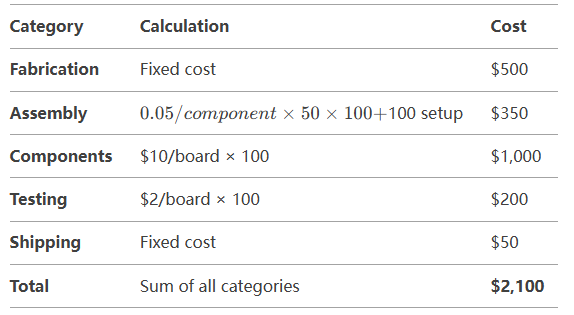
Cost-Saving Tips for Your PCB Project
Here are strategies to keep costs down, building on the economies-of-scale concept from our cost-per-unit blog:
-
Shrink Board Size: A 100mm x 100mm board is cheaper than 150mm x 100mm and may allow more units per panel.
-
Limit Layers: Drop from 4 to 2 layers if feasible, potentially saving 30%.
-
Stick to Standards: Use FR-4 and HASL to avoid premium material costs.
-
Order in Bulk: 100 units might cost $5 each, while 10 could be $10 each.
-
Simplify Design: Reduce drill holes and relax tolerances where possible.
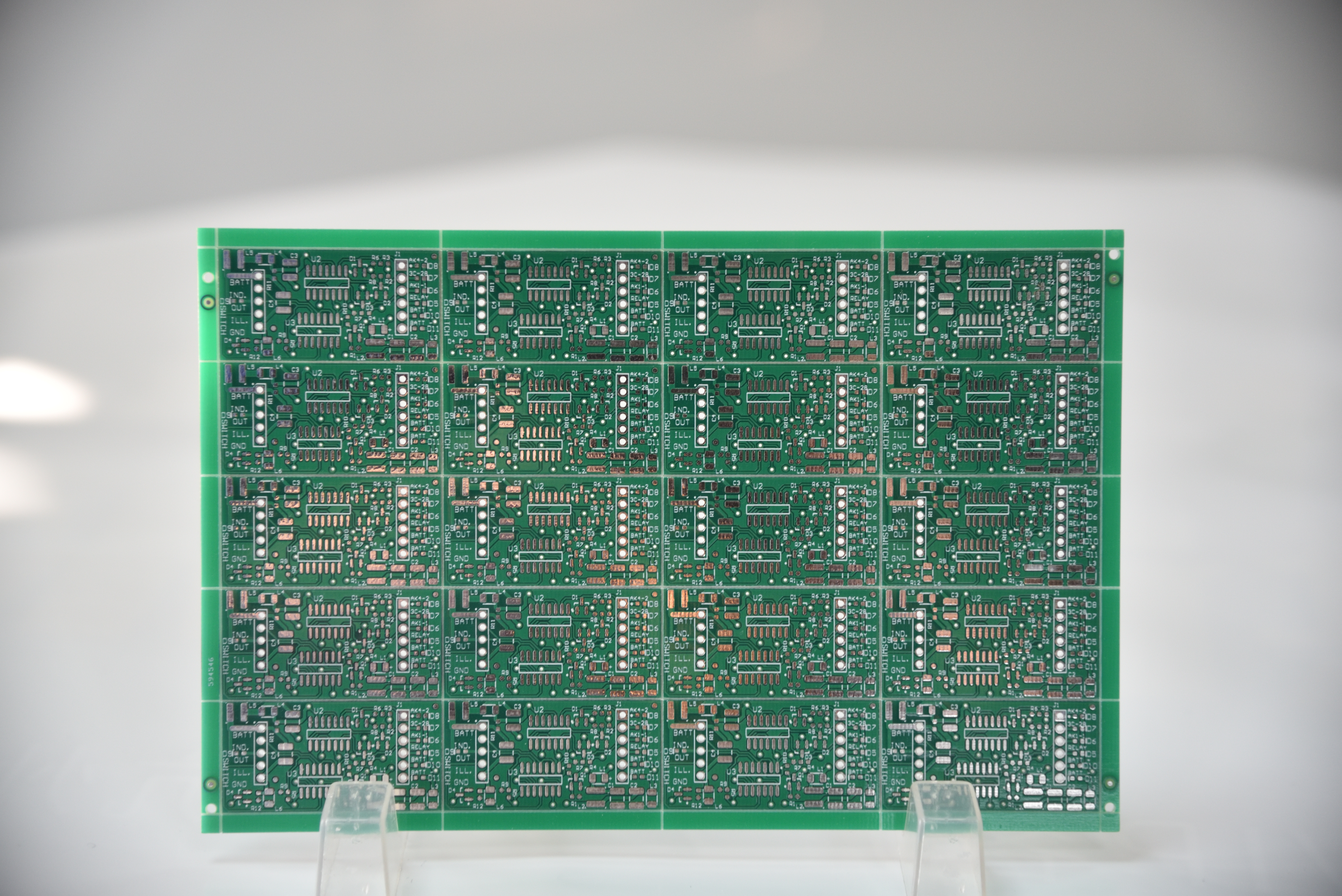
These tweaks can significantly lower your fabrication quote and overall budget.
Beyond Fabrication: Lead Time and Location
Two additional factors affect costs:
-
Lead Time: Faster production increases prices. A 10-day lead time might cost $50, while 48 hours could be $100. Plan ahead to save.
-
Manufacturing Location: Producing in China, where costs are lower, can reduce expenses. ALLPCB leverages this advantage for competitive pricing.
Weighing these can optimize both custom PCB cost and delivery.
ALLPCB's Cost-Effective Solutions
ALLPCB supports engineers with tools and services to streamline budgeting. Our online PCB cost calculator provides instant fabrication quotes, while our separate assembly quote system helps estimate additional costs. With manufacturing in China, we offer competitive pricing, rapid prototyping (as fast as 24 hours), and high-quality PCBs tailored to your needs. From design to delivery, ALLPCB ensures cost efficiency without compromising quality, making us a reliable partner for your next project.
Conclusion
Estimating your PCB project budget requires looking beyond per-unit costs to include assembly, components, testing, and shipping. By using a PCB cost calculator—as introduced here and built upon from our PCB cost per unit blog—you can anchor your planning with accurate fabrication estimates, then layer in other expenses for a complete view. Combine this with cost-saving strategies, and you'll keep your project on track financially. Start with tools like ALLPCB's calculator to take control of your budget today.
Feel free to explore our products in more detail:Instant PCB Quote Online, Quick Order - ALLPCB
 ALLPCB
ALLPCB





